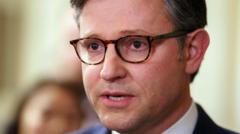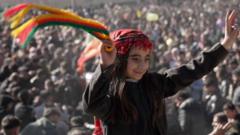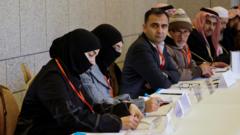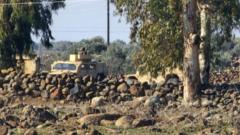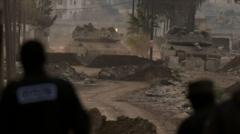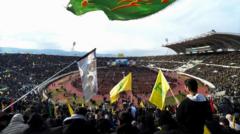As HTS's new leader aims for a more inclusive future, tensions with hardliners reveal the complexities of governance in a historically fractured landscape.
Navigating Futures: Can Syria's HTS Rebrand Away from Extremism?
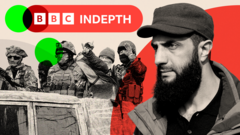
Navigating Futures: Can Syria's HTS Rebrand Away from Extremism?
Rebranding efforts by Syria's HTS leadership emerge amid conflicting societal pressures.
In recent developments from Syria, newly appointed leader of Hayat Tahrir al-Sham (HTS), Ahmed al-Sharaa (formerly Abu Mohammed al-Jolani), has signaled a potential shift away from his organization's jihadist roots. During a visit to Damascus, al-Sharaa was photographed with a woman who was advised to cover her hair before the picture was taken, triggering intense discussions across various media platforms. This moment encapsulates the precarious balancing act HTS must perform between the liberal factions of Syrian society and the hardline Islamist elements within their own ranks.
HTS, recognized as a terrorist organization by international bodies including the UN, US, EU, and UK, finds itself torn between winning the approval of a diverse Syrian populace and accommodating the demands from its more extremist constituents. Al-Sharaa's recent actions, such as offering amnesty to military defectors and engaging in conciliatory dialogue, have sparked debates over whether this represents a genuine ideological evolution or merely a strategic maneuver aimed at consolidating power.
The context of al-Sharaa's leadership is critical. Despite historical ties to groups like al-Qaeda and the ultra-hardline IS, HTS has emerged as a significant force in Idlib province, presenting itself as a governing body focused on stability and reconstruction. However, tensions are brewing, especially as the group attempts to shake off its militant past while simultaneously needing to appease hardliners who favor a strict interpretation of Sharia law.
While al-Sharaa’s narrative emphasizes coexistence and rebuilding Syria, internal fractures are starting to re-emerge as hardliners express dissatisfaction with perceived leniencies in governance and calls for more stringent religious conduct. This friction could ignite future conflicts within HTS and its opposition if ideological rifts continue to grow.
As HTS navigates its evolving identity amidst pressing challenges, the struggle between softer governance and strict Islamist expectations could shape not just the organization's future, but the overall direction of post-war Syria. Whether al-Sharaa can maintain a delicate equilibrium between diverse societal expectations and hardline pressures will be crucial to HTS's legitimacy and survival. With every decision, they tread on a tightrope that could alter the course of the nation's future significantly.
HTS, recognized as a terrorist organization by international bodies including the UN, US, EU, and UK, finds itself torn between winning the approval of a diverse Syrian populace and accommodating the demands from its more extremist constituents. Al-Sharaa's recent actions, such as offering amnesty to military defectors and engaging in conciliatory dialogue, have sparked debates over whether this represents a genuine ideological evolution or merely a strategic maneuver aimed at consolidating power.
The context of al-Sharaa's leadership is critical. Despite historical ties to groups like al-Qaeda and the ultra-hardline IS, HTS has emerged as a significant force in Idlib province, presenting itself as a governing body focused on stability and reconstruction. However, tensions are brewing, especially as the group attempts to shake off its militant past while simultaneously needing to appease hardliners who favor a strict interpretation of Sharia law.
While al-Sharaa’s narrative emphasizes coexistence and rebuilding Syria, internal fractures are starting to re-emerge as hardliners express dissatisfaction with perceived leniencies in governance and calls for more stringent religious conduct. This friction could ignite future conflicts within HTS and its opposition if ideological rifts continue to grow.
As HTS navigates its evolving identity amidst pressing challenges, the struggle between softer governance and strict Islamist expectations could shape not just the organization's future, but the overall direction of post-war Syria. Whether al-Sharaa can maintain a delicate equilibrium between diverse societal expectations and hardline pressures will be crucial to HTS's legitimacy and survival. With every decision, they tread on a tightrope that could alter the course of the nation's future significantly.







